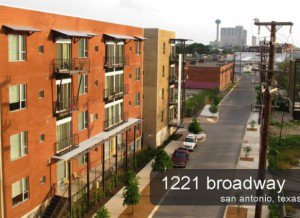Share This
Related Posts
Tags
Micro-Size It!
By Suzann D. Silverman on Jul 13, 2013 in News
 SAN DIEGO —Even in markets like New York and San Francisco, it may soon become prudent to ask: Can apartments be too small? In recent years, developers have begun experimenting with layout and design to determine just how tiny a space they can easily lease. During the Urban Land Institute’s 2013 Spring Meeting, Kauri Investments Ltd. chairman James Potter and AREA Real Estate LLC principal David Adelman offered some creative configuration ideas that are attracting Gen Y and empty-nesters alike. Either group may use such units as their sole residence or maintain a larger, perhaps weekend-only, additional home farther from the city. What makes these renters different from those who prefer more space, Potter noted, is their even greater focus on price point.
SAN DIEGO —Even in markets like New York and San Francisco, it may soon become prudent to ask: Can apartments be too small? In recent years, developers have begun experimenting with layout and design to determine just how tiny a space they can easily lease. During the Urban Land Institute’s 2013 Spring Meeting, Kauri Investments Ltd. chairman James Potter and AREA Real Estate LLC principal David Adelman offered some creative configuration ideas that are attracting Gen Y and empty-nesters alike. Either group may use such units as their sole residence or maintain a larger, perhaps weekend-only, additional home farther from the city. What makes these renters different from those who prefer more space, Potter noted, is their even greater focus on price point.
Over the past four to five years, Potter has been striving for increasingly smaller units. With eight projects currently under development, he has achieved an average size of 100 to 200 square feet. So far focused on smaller buildings with a limited number of units, his latest, in downtown Oakland, Calif., is situated on a 40-by-100-foot site and includes six to eight “bedrooms” and a kitchen.
Potter achieves such small unit sizes by considering what can be removed from the unit. A central kitchen, for instance, can be a big space saver, since people are not cooking to the extent they used to, he noted. Having discovered that a shared refrigerator does not make for good neighbors, he includes a small model in each unit, plus a sink (not a “kitchen sink” or a “bathroom sink”—just a sink, said the developer, who maintains that putting labels on the properties or their contents complicates their image). Residents must supply their own dishes, eating utensils and linens, but the central kitchen includes pots and pans and cooking utensils. Residents can collaborate on any herbs or spices they want to share. The units are fully furnished—there is only room for a bed, table and chair—and include utilities and Internet access. A central bathroom—dormitory style—can also help reduce the unit size.
 Adelman’s initial micro-apartment units are not nearly as small. His San Antonio property 12WELVE 2WENTY1 (left), at 1221 Broadway, offers a mix of “loft apartments,” the smallest of which is 456 square feet and rents for $725. He is currently planning to renovate 606 Avenue B to produce 113 units in three sizes: one-bedroom units with 614 square feet, studios with 514 square feet and micro-units with 380 square feet. The micro units, which will comprise 10 percent of the total, will include “almost no kitchen,” whereas the larger micro units in 12WELVE 2WENTY1 include galley kitchens with minimal furnishings to provide flexibility.
Adelman’s initial micro-apartment units are not nearly as small. His San Antonio property 12WELVE 2WENTY1 (left), at 1221 Broadway, offers a mix of “loft apartments,” the smallest of which is 456 square feet and rents for $725. He is currently planning to renovate 606 Avenue B to produce 113 units in three sizes: one-bedroom units with 614 square feet, studios with 514 square feet and micro-units with 380 square feet. The micro units, which will comprise 10 percent of the total, will include “almost no kitchen,” whereas the larger micro units in 12WELVE 2WENTY1 include galley kitchens with minimal furnishings to provide flexibility.
Potter noted that he is able to charge $200 to $400 per month for units by reducing his own costs. The units come with neither parking (in Oakland, only 15 to 20 percent of the property’s residents have cars, he said) nor amenities (people prefer to interact with their community, anyway). The leasing contract (currently generally 90 days, offering flexibility and a chance to learn more about these residents, but he will produce a lease for as long as nine months) and monthly payments are all handled electronically. Potter provides laundry facilities in the building, and has experimented with card systems and free use but is avoiding coin operation, while Adelman will help residents arrange for a local company to install a stacked washer and dryer in the unit on request.
Such units, the developers noted, have had no trouble attracting residents or financing from local community banks. Major banks—which might offer lower interest rates—have been more reluctant to embrace the concept, and municipalities’ responses have been mixed. For instance, Potter was rebuffed by San Francisco before heading across the bay to a more welcoming Oakland. Parking creates the biggest challenge, since municipalities are accustomed to requiring parking for their residents and homeowners can be leery of losing their own on-street parking alternatives to renters that have no other option. Although alleys, when present, can alleviate this concern, Potter suggested an agreement with an office building as another alternative, as businesses tend to populate their garages during the day while apartment residents are more likely to need them at night.
Suzann D. Silverman is editorial director of Commercial Property Executive.
